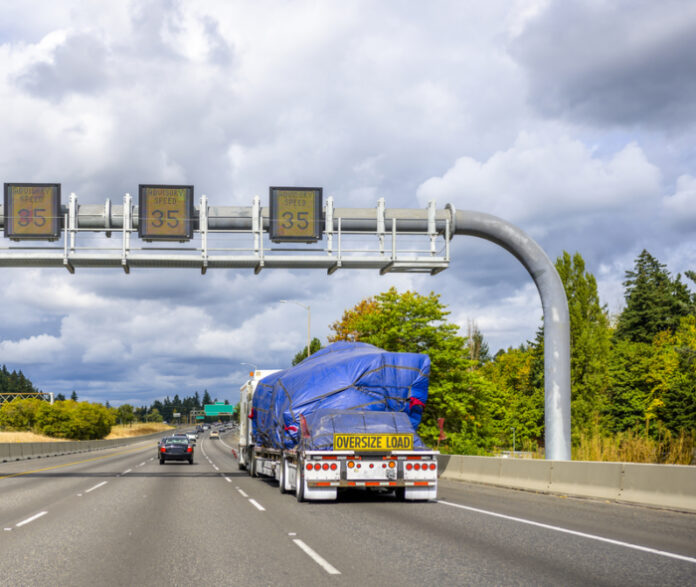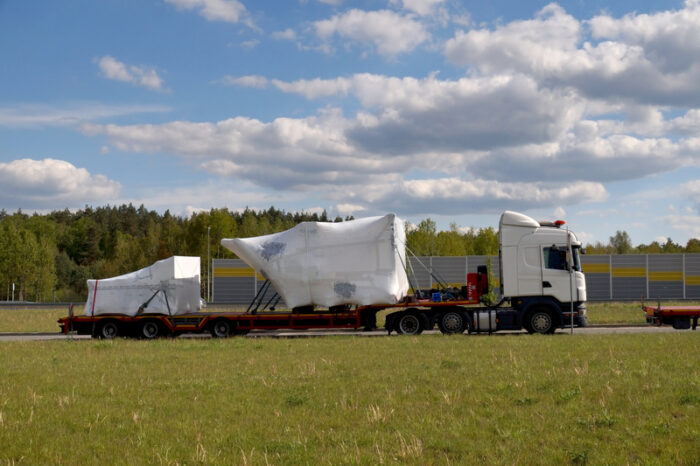
The home business boom shows no signs of slowing down. More and more entrepreneurs are ditching the office commute for the comfort of their homes. But this shift comes with unique challenges, especially when it comes to shipping. You might be wondering how to ship oversized loads. As a home-based business owner, you’re likely dealing with bigger items than the average online shopper. Think furniture, equipment, or artwork. These oversized loads can be a major headache to ship.
You know the pain points all too well: high shipping costs, the constant worry of damage, confusing regulations, and the struggle to find trustworthy carriers. It’s enough to make anyone want to throw in the towel. But there’s a way to navigate this complex world of oversized shipping.
This article gives practical advice and proven strategies to streamline the process and answer the question of how to ship oversized loads. You’ll learn how to ship your large items safely, efficiently, and without breaking the bank. So, whether you’re a seasoned pro or just starting out, get ready to take control of your shipping game.
Understanding Oversized Load Definitions And Regulations
So, what exactly is an “oversized load?” It’s a specific term with legal definitions. Generally, a shipment is considered oversized if it exceeds certain dimensions and weight limits. These limits vary.
Knowing these regulations is essential when considering heavy equipment transport. Local, state, and federal rules all come into play. Ignoring them can lead to hefty fines or major delays. Your oversized shipment can get held up because of a paperwork error. That’s lost time and money.
Plenty of resources are available to help you. Start with the Department of Transportation (DOT) websites. They usually have clear guidelines on oversized load regulations. Check those first before you even think about packing up your shipment.
Preparing Your Oversized Load For Shipping
For packaging and crating, use sturdy materials like wood or metal. You’ll need proper bracing to keep everything secure inside the crate. And remember, weather can be unpredictable, so factor in protection against rain, sun, and wind.
Next is labeling and documentation. Markings need to be clear and easy to read. Include the dimensions, weight, and any special handling instructions. The bill of lading is your shipping contract, so make sure it’s filled out correctly. Depending on your load and route, you might also need permits.
Finally, don’t forget about insurance. It’s an extra cost, but it’s worth it for peace of mind. You’re protecting your investment from damage or loss during transit.
Choosing The Right Shipping Carrier
With your oversized shipment prepped, it’s time to find the right heavy haul trucking company. Choosing a carrier isn’t a one-size-fits-all situation. Several factors come into play. First, look for expertise in oversized loads. You wouldn’t want your shipment in the hands of someone who’s never handled something significantly big.
Next, check the service area. Does the carrier cover your route? Some specialize in certain regions or states. Also, make sure the carrier’s insurance coverage meets your needs. And of course, get quotes from several carriers to compare prices.
You’ll come across different types of carriers. LTL (Less Than Truckload) might work for smaller oversized loads. Specialized carriers are pros at hauling big stuff. Freight brokers act as middlemen, finding the best carrier for you.
Getting quotes is easy. Many carriers have online tools. Don’t be afraid to call and ask questions. Compare quotes, services, and customer reviews before making your decision. It’s your shipment, so choose wisely.
Optimizing Shipping Costs
Shipping oversized loads can get pricey when looking at how to ship oversized loads. First, negotiate rates with carriers. Don’t just accept the first quote you get. Ask for discounts, especially if you’re a repeat customer or shipping multiple items.
Another strategy is consolidating shipments. If you have several smaller loads, combine them into one larger shipment. This can often lead to lower rates. Be flexible with delivery dates. If you’re not in a rush, you might snag a better deal by choosing a less busy time.
But be aware of hidden costs. Fuel surcharges can fluctuate depending on gas prices. Accessorial fees are extra charges for things like liftgate service or residential delivery. These can add up quickly, so factor them into your budget.
Luckily, you don’t have to do all the math yourself. Many online tools and resources can help you estimate shipping costs. Use them to compare prices from different carriers and find the best deal for your budget.
Tracking And Managing Your Shipment
Most carriers offer online portals or apps to monitor your shipment’s progress. Use them for real-time tracking. It’s also a good idea to stay in touch with the carrier. A quick call or email can clear up any questions or concerns.
Delays can happen due to weather, traffic, or mechanical issues. Proactive communication helps. Check-in with the carrier if you notice any delays. They might have alternative routes or solutions to get your shipment back on track.
When your oversized freight arrives, don’t just sign and walk away. Inspect it carefully before accepting delivery. Look for any signs of damage. If you find any, document it with photos and notes. This will be important if you need to file an insurance claim.
Conclusion
How to ship oversized loads is about being proactive, not reactive. The tips shared herein will help you stay on top at every step. The goal is to get your product to its destination safely and efficiently.
Consider building relationships with reliable carriers for better rates and smoother service. Look into freight forwarding if you’re tackling international shipments. And don’t underestimate the power of shipping software. It can save you time and money in the long run. With the right knowledge and tools, you can turn oversized shipping into a competitive advantage.
Find a Home-Based Business to Start-Up >>> Hundreds of Business Listings.














































